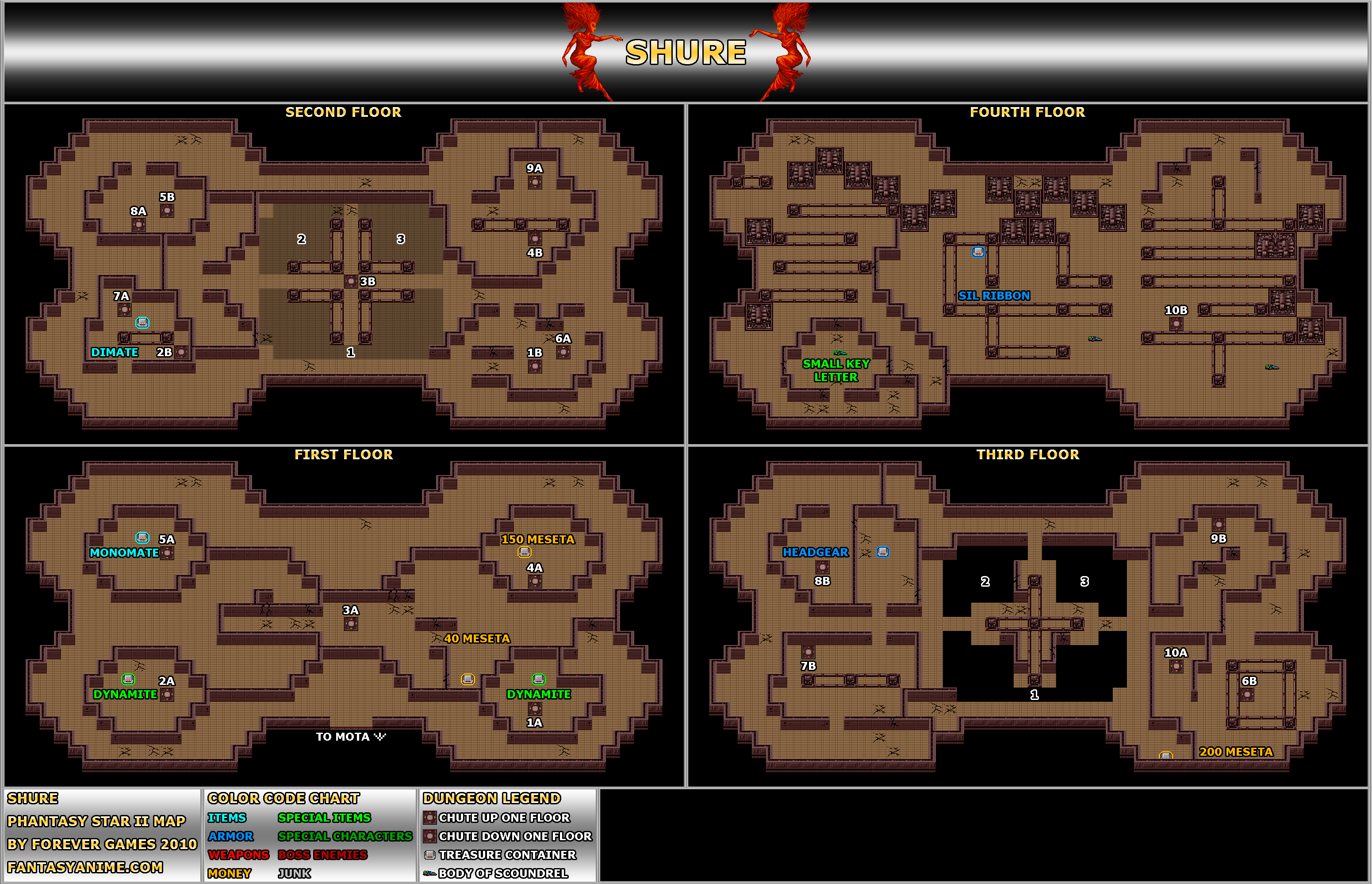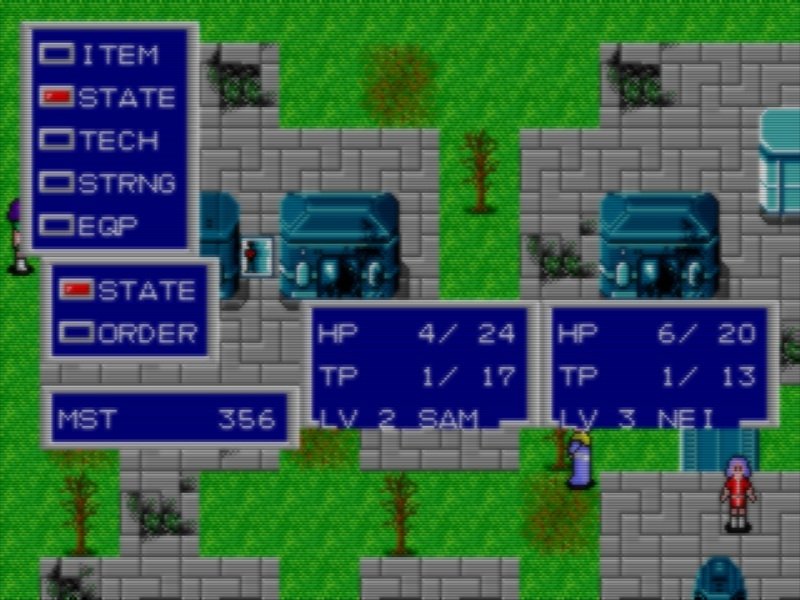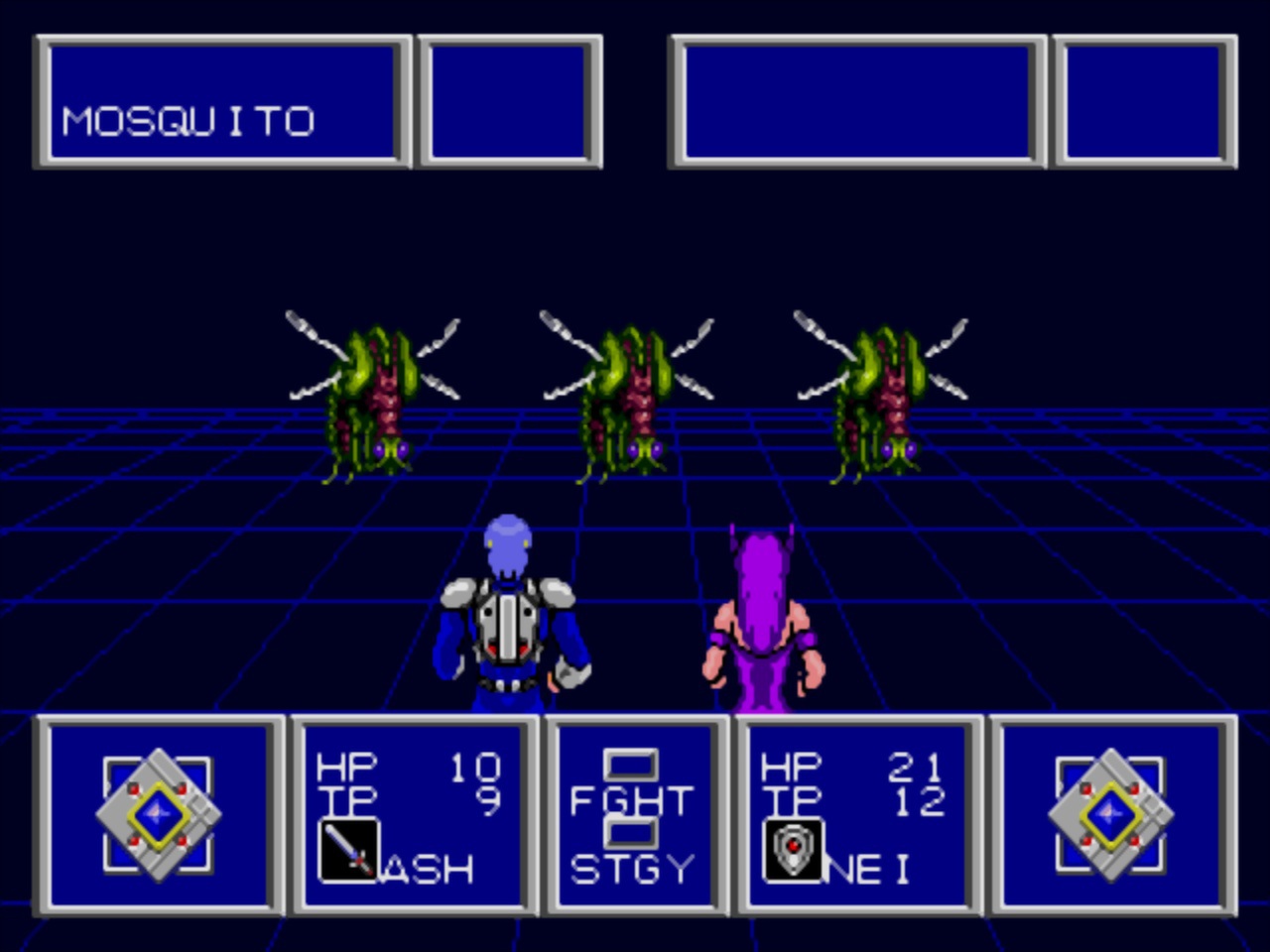I mentioned old Sega Genesis' Phantasy Star II (1990?) not long ago and I'm still with it. I guess I've averaged an hour a night for a week now. It's still a very nice RPG. Currently, my lead character is level 10 of a max 50 and I've cleared two dungeons with two of seven potential companions (you can choose up to three companions to join your lead character, changing out any time you return home). With age I've learned more patience so I'm taking my time leveling stats and saving for adequate gear before dungeon grinding, unlike my 13ish year-old self who probably rushed the first dungeon as soon as I found it.
The image, above, shows the standard overhead town view of Arima, the second town you will soon discover after starting the game. Menus shown provide access to your character
Item sets (each character carries 16 items total, including equipped gear;
State for your party showing current levels of health (HP), magic (TP), character levels, and MST, which is the in-game currency. Here, "Sam" is the player's custom-named lead character. Yes, you can name your main!
Also in the image, notice the level of destruction in the burnt plant life and damaged homes and storefronts!! As you explore this town by speaking to each and every villager, you learn that the Scoundrels have kidnapped a local girl, and that her father lost his mind and has started terrorizing locals for money. These are all clues to seek out and explore the first dungeon, Shure.

Here is the world-view, once leaving a town. You lead your group town to town, picking up clues on the local travesties that only you can put an end to. All the while randomly bumping into world monsters to fight, leveling your characters and the in-game currency, Meseta (MST). Both will take considerable dedication to max out. As suggested in the image, areas are partitioned off from each other, only connected by small bridges. Here, the black background is actually a water canal currently blocked off by several dams scattered around this world. "Why?" will become a question to solve later in the game. Each world partition seems to restrict higher level monsters from accessing lower skill areas, so once you learn where the big ticket beasts reside, you can grind till your heart's content.
Speaking of beasts, following is the battle view:
Here we have Ash (custom named, remember?) and your first companion, Nei. As the introductory story reveals, you first met Nei six months earlier being attacked, I believe. Since, she has joined you and has sworn to fight at your side to solve the mysteries of Mota (the world on which you live), and why Mother Brain (a central computer that regulates all things on the planet's surface) has created and allowed monsters to roam the planet.
Battles are turn-based, most times giving you first shot. You can choose to immediately fight or to strategize your encounter. You could run away, but rarely does that work if your level is lower than your attacker. The more practical strategy is to set each character to use physical or magical attacks, set to defend, or to cast healing support targeting specific party members. In this example, the player has only come across three Mosquitos. You may encounter up to two different monster types at a time, where one group is named in the top-left frame and the other, top-right. You may face up to four total monsters.
The battles are exciting and, though the background here is quite minimal, the character and monster animations are very well done. Half of the fun, for me, is waiting to discover a new monster to see its new attack animation. The only down side to these battles is that while you can plan your attack to focus on only one monster type, you have no control as to which of that monster type you attack first. Nor can you focus fire your characters one just one enemy. Often times I've screamed at the monitor while my team skips around, hitting monster 1 then jumping over to monster 2 leaving BOTH alive when two hits might have killed one or the other. So it becomes obvious, early in the game, to thin the numbers by attacking whichever monster type has the least monsters on screen. Other than that, it's great stuff and details really are gorgeous for this timeframe. For that, I'm ok with the minimal battle screens.
I'd say the game easier this time around compared to my experience back in the 90s, but that's just the level grind. The dungeons, which this game is known for (both loved and reviled), is as dense as I remember them being. For context, the original cartridge came with a 100+ page hint guide complete with maps to each dungeon level. The first dungeon, Shure, is four levels deep with telepads scattered throughout. Some take you up to the next, more difficult level, while others take you down to lower levels.

You have to use these telepads strategically. For example, there may be three pads on level one that take you to level two. Two of those lead to locked treasure chests. Where's the key? Somewhere on level four, of course. The third teleport takes you through to level two, but you then have port up to three, find another port back down to two to bypass a deadend on three. All of course require the long scenic route to find. Yeah. With multiple ports and paths per level, most of which you don't find until traversing half a floor, you could spend all night just mapping one dungeon. Hence the ridiculously long hint book. Good news for ROMmers, these maps are readily available online through gaming communities.
So two dungeons down and I just added my fourth companion. I'm not as obsessed as I was as a kid, but there is still an addictive quality to it all. I can now at least turn off before I pass out.
The soundtrack is great and the story is fairly dramatic. At least for as much as a 13 year old kid could handle. The game is grim compared to say Chrono Trigger, so be prepared for something more in line with Final Fantasy arcs.
So far so good. I'll post back if I continue. Maybe with pics too.



 Assuming I'll be able to play it. Fingers crossed.
Assuming I'll be able to play it. Fingers crossed.




